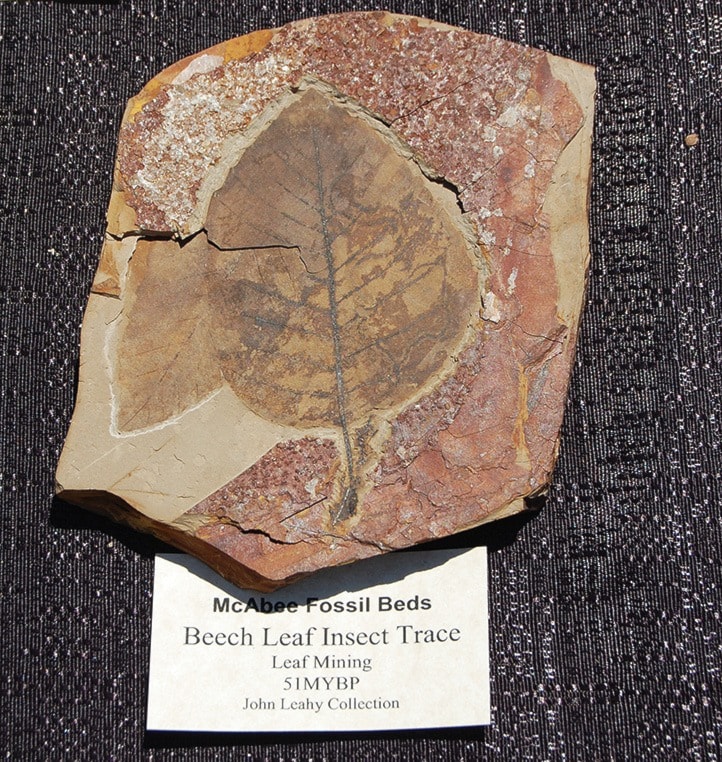A group of local volunteers working to develop the McAbee Fossil Beds site east of Cache Creek has received a $10,000 grant from the provincial Rural Dividend Fund to put together a business plan. It will provide a blueprint for development of the site, which has been closed since it was taken over by the provincial government in July 2012 and declared a heritage site.

Forests, Lands, and Natural Resource Operations Minister Steve Thomson at the McAbee site in
July 2012, when the provincial government officially took it over. Photo by Wendy Coomber.
The McAbee Working Group was established in April 2016, and is composed of representatives from area communities, First Nations, the Thompson-Nicola Regional District, Thompson Rivers University, Gold Country Communities Society, Tourism Kamloops, the Royal B.C. Museum, and the Ministry of Forests, Lands, and Natural Resource Operations. Members have been meeting regularly to discuss the future of the site and what development of the McAbee beds might look like.
ATW Associates Inc. have been hired to develop the business plan. One of the partners has a Ph.D. in paleontology, and is familiar with sites such as McAbee, which is part of a former lake bed that was deposited more than 50 million years ago. The site is recognized as containing the most diverse array of plants and insects from the Eocene Epoch in the entire province.
“How exciting is that?” says Deb Arnott, a member of the working group and general manager of Community Futures Sun Country, about the grant. “We can start moving forward. It will lay out a business case foundation [for the McAbee site], and we can use the business plan to attract more funding.”
The working group is considering future research and visitor infrastructure at the site, and what that will look like. “We have to respect the natural and cultural heritage,” says Arnott. “All the stakeholders will provide feedback about how that will be done. We need input from all the different players; as much feedback as we can get.”
Dr. Bruce Archibald, a paleoentomologist who has done extensive research at the McAbee site and is part of the working group, is excited by the prospect of seeing the site developed and made open to researchers and to the public. “I’d like to see a detailed, well-curated collection here,” he told The Journal in May 2016. “Collections are good; they last forever. To build and create a good collection of McAbee fossils would be a legacy that would be a strong and lasting thing. I hope to see that happen here.
Development of the site would bring major economic benefits to the region. The John Day Fossil Beds in a remote area of northeastern Oregon attract close to 100,000 visitors a year; McAbee is right beside the Trans-Canada Highway. With the re-establishment of the ferry run from Port Hardy to Bella Coola in summer 2018, it is anticipated that thousands more tourists will be visiting the area, and at least one tourism expert predicts that visitors taking the circle tour are the sort of people who would be interested in seeing the McAbee site.

The McAbee site is immediately adjacent to the Trans-Canada Highway, providing easy access for visitors.
“The McAbee beds would be a destination for people from far afield, and would create spin-offs for other events,” says Archibald. “And it’s completely sustainable. It’s not based around natural resource extraction, and isn’t dependent on outside forces. It’s a significant contributor to world culture and knowledge, which is no small thing.”
Arnott says the working group hopes to have the business plan completed by mid-March. “Our goal is to have a really solid document that will carry us forward for two to three years.” In the meantime, she says, Community Futures is looking into grants for shovel-ready projects at the site. “We need a site plan done before we can start building infrastructure. The ultimate vision is to have the site reopened to the public. We have to work on phase one, which is the bare minimum we need in place to get visitors on the property.
“I’m so excited about this project, and to see it moving forward.”
